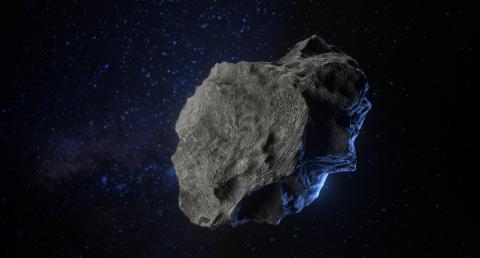
Les astéroïdes Ryugu et Bennu présentent les caractéristiques d’une même classe d’objets primordiaux
Grâce à l’analyse comparative des échantillons rapportés des astéroïdes carbonés Ryugu et Bennu, une équipe internationale formée autour de scientifiques de l’Institut d’Astrophysique Spatiale (Univ. Paris-Saclay / CNRS) vient de mettre en évidence une classe d’objets primordiaux, dont les propriétés pourraient avoir contribué aux processus de formation et d’évolution du Système solaire.
Les astéroïdes carbonés sont des vestiges précieux de la formation du Système Solaire, il y a 4,5 milliards d’années. Ils ont en partie enregistré les processus qui en ont gouverné l’évolution initiale, et contribué à l’apport de minéraux et composés chimiques qui ont pu être déterminants pour l’évolution de la Terre et des planètes telluriques.
Les retours d’échantillons de l’astéroïde Ryugu par la mission Hayabusa2 de la JAXA1 puis de l’astéroïde Bennu par la mission OSIRIS-REx de la NASA offrent, pour la première fois, la possibilité d’analyser en laboratoire le matériau qui les compose, sans altération terrestre. En comparant les échantillons de ces deux objets, les travaux qui viennent d’être publiés dans Nature Communications, ont permis de montrer que Ryugu et Bennu sont issus d’une même classe d’objets primordiaux, dont ils ont caractérisé des propriétés essentielles.
Ces analyses ont été réalisées dans le laboratoire de « curation » (préservation et analyses) à l’ISAS2 près de Tokyo au Japon, où sont conservés et préservés de toute contamination et de tout contact avec l’atmosphère terrestre, les échantillons rapportés de Ryugu, ainsi qu’une fraction des échantillons de Bennu. Au sein de ce laboratoire, figure un instrument français, MicrOmega, microscope hyperspectral infrarouge conçu et développé à l’Institut d’Astrophysique Spatiale avec le soutien du CNES ; il est opéré conjointement par des équipes de l’Institut d’Astrophysique Spatiale et de l'Institute of Space and Astronautical Science (Sagamihara, Japan) qui en analysent les résultats. Couplé à un microscope optique et à un spectromètre ponctuel travaillant dans l’infrarouge moyen, MicrOmega participe ainsi à une analyse combinée étendue des échantillons, dès la phase de curation.
Ces analyses ont montré que les échantillons de Ryugu et de Bennu présentaient des propriétés spectrales très similaires dans l’infrarouge proche, jusqu’aux échelles de quelques dizaines de microns. Dans les deux cas, une grande variété de composés diagnostiques a été détectée au sein de la matrice riche en phyllosilicates, notamment des composés phosphorés à fort potentiel biochimique.
Malgré certaines différences, ces résultats suggèrent une origine et une évolution très similaires des deux objets. Leurs propriétés principales semblent donc caractériser une même classe d’objets primordiaux, dont l’apport pourrait avoir été significatif dans l’évolution des objets du Système solaire.
Notes
1 Japan Aerospace Exploration Agency
2 Institute of Space and Astronautical Science, one of the three main pillars of the Japan Aerospace Exploration Agency (JAXA)

